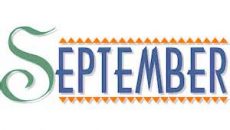Tornados, earthquakes, floods, and fires are disasters that can bring tragedy to  communities and families across the nation. Being prepared for events such as these by having an emergency plan can make a real difference in people’s lives. September is National Disaster Preparedness Month, a time when organizations, communities, and families are encouraged to plan for emergencies and the unexpected.
communities and families across the nation. Being prepared for events such as these by having an emergency plan can make a real difference in people’s lives. September is National Disaster Preparedness Month, a time when organizations, communities, and families are encouraged to plan for emergencies and the unexpected.
This year’s theme, “Don’t Wait, Communicate,” reminds us that we should have a conversation about what to do in an emergency and that the last thing we want to worry about in an emergency is how to communicate with our family.
Below are a few resources available to help you get started creating a preparedness plan:
- The Department of Homeland Security’s National Preparedness Month website is great source for information on preparing families and communities for all types of possible emergencies, including resources on making plans and preparing emergency kits.
- The Centers for Disease Control and Prevention, in collaboration with the American Red Cross, created the Emergency Preparedness and You web section, which identifies and answers common questions about preparing for unexpected events.
Trauma can have a negative impact on children’s and youths’ short- and long-term well-being. Parents, professionals, and other caring adults can use the resources below to learn about how trauma affects children and youth and what they can do to help.
- The National Child Traumatic Stress Network offers information on helping children, families, communities, and professionals be prepared and recover.
- Child Welfare Information Gateway has collected resources for professionals to help them provide trauma-informed care to children, youth, and families. Also, be sure to check out Parenting a Child Who Has Experienced Trauma for information on how trauma can affect children of all ages and what parents can do help support their children’s healing.
Your feedback is important. Be sure to let us know how we’re doing by taking our survey! For more information, visit our website, email us at info@childwelfare.gov, or call us toll-free at 1.800.394.3366.











